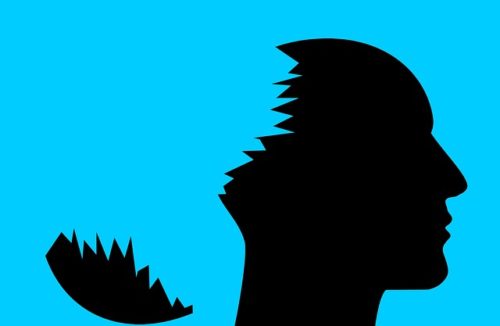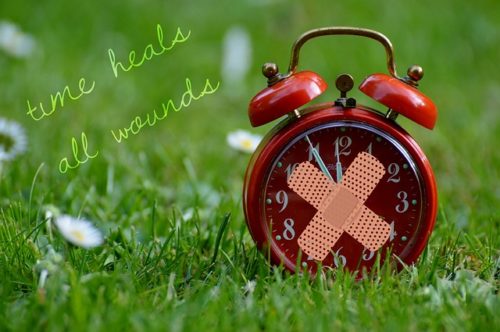Pagan Perspectives
As Pagans, we often hear of calls for healing and prayers when our community members have an illness or are in need of care. We send prayers, thoughts, and perform healing rituals. We offer help as friends, as family, and as a community. We may seek those among us who are known healers just as we seek the assistance of doctors. We lend an ear or our kitchen table for a chat with others. We gather online in virtual spaces to express our desire for wholeness. We give thanks individually, as a community, and for others when even the tiniest progress is made towards the restoration of health on any level. Overall, with the help of the gods, things work well in our lives – until they don’t.
Right now, a large part of our community is in the midst of an effort to soothe scabs that have been nicked and pulled apart as the blood of memory seeps out into the open. When members of the community tell their stories of being the recipients of sexual assault, bullying, or physical abuse, the issue of whether or not their stories are believed rips open the fabric of the past for those people, and not in a good way. In the midst of uncertain times, healing conveys more than just making an undesirable condition disappear. Healing becomes a larger effort to return to a state of soundness, of feeling whole in body, mind, and spirit.

Health [Pixabay]
Awareness
Recently, the feeling of uncertainty has hit close to home. While I was in the middle of one of the most beautiful places on earth, my life changed with the slip of a foot. One step hit solid ground; the next hit air. For a few moments, my knee bent and shifted with the grace of a deer. I heard the sound of a “boing,” and then time stopped. I felt like Wile E. Coyote realizing that gravity was about to kick in. My actual panic came only at the moment of realization: nothing would be the same again. Unlike in cartoons, human limbs and ligaments don’t meld back together so easily. Like emotional and spiritual trauma, a serious physical injury progresses through stages of awareness, treatment, and a prolonged return to a semblance of wholeness.
The silence after the trauma currently traversing our communities heightens a state of being aware of our internal pain, whether it occurs moments, months, or years after the event. For many, the active work of listening to others’ pain reveals that wounds which seemed superficial were in fact deep lacerations of the soul. The effect of renewed trauma hits the ear and the heart with equal force. While helpful, knowledge of a trauma’s existence does not indicate the time it will take to heal. No healer, doctor, therapist, or psychiatrist can gauge the true length of healing. What we can do is to take a first step toward healing by admitting that the trauma is real and there is pain.

Pain [Pixabay]
When an injured ligament or bone first receives treatment, the pain drives all thoughts from the mind except for one: a desperate need for relief. Each movement of the knee is a reminder of the injury. When injured, the desire to keep doing normal activity hits a wall. Immediate rest and the cessation of pain become the two main priorities. Assessment may not happen for minutes or hours after the injury itself. There are moments when the need for sleep or rest seems to outweigh the pain.
The next part of treatment is to avoid additional damage to the injured area pending assessment of the extent of the damage. A leg immobilization sleeve prevents the knee from moving out of place and forces the injured limb to remain still. Crutches bear the weight and permit limited mobility. MRI and X-rays map the area for breaks and tissue damage. Doctors consider a mix of passing time, consideration of surgical restoration, and physical therapy as elements in a treatment plan. A pattern of doctor’s visits at six week intervals, physical therapy sessions, and consideration of surgery dots the immediate horizon.
Emotional and spiritual trauma pulls the bandage off the wound with little relief for the agony that erupts. The cessation from pain may come in the telling and re-telling in a safe space, among those who care. For those who do not have trusted friends or family, a carefully chosen therapist might fill the role as a part of treating what cannot be seen. An immobilization tool that prevents the pain from causing sanity to slip may be a safe zone, such as a hidden handwritten or digital journal, or the choice to remain silent when the space is not safe. With a physical injury, the immediate damage on the surface can be seen; with an emotional or spiritual trauma, the damage may not be apparent to others. The injury may hide behind a choice to turn away from media, or to embrace laughter through escapism with funny movies, videos, and experiences. The rise in sharing of pet and cute animal videos as a means to apply balm to the open wound is not by accident. What is more healing than watching a cute otter play, or laughing at a cat video? For a brief moment, the trauma is not forgotten, but the pain is lessened as our focus shifts.

Recovery [Pixabay]
Prolonged Return
The hardest part of recovering from a knee injury is the need to re-learn what has become automatic through years of practiced motion. Walking down a set of stairs, riding a bike, carrying objects, driving, or simply standing long enough to shower become goals along the return to health. Climbing into bed, an action memorized from childhood, must be re-learned to use the healthy knee.
A solid framed brace replaces the leg immobilizer, and eventually, confidence in the strength of the knee leads to removing the brace for longer periods of time. The knee still crunches in bits. A barometer inside the knee hints at a storm hours or even entire days before winds blow and rain falls. The range of motion increases from a paltry 75 or 80 degrees to turning a bike wheel at 105 degrees to attempts to carefully navigate stairs at 120 degrees. At times, it may seem as though a step forward leads to two steps backwards. Rest during the prolonged return slips in just as it seems that permanent progress is in sight. A return to healing is prolonged because the choice is up to the individual and the body. It means movement, even when it hurts – especially when it hurts. Repetition drives the body back to a semblance of normalcy.
In our community, in our response to emotional and spiritual trauma, this may mean speaking out and allowing the truth to be seen. We test the injury as we test the treatment. We purify ourselves and our larger community through revelation, acknowledgement, and implementation of change. For some, change means taking political action, running for office, or working as a community organizer. For others, the shift occurs with the choice of intimates, those who are permitted to know us fully as individuals because we consider them to be safe. We cull borderline or unacceptable acquaintances from our friends lists on Facebook, from our contact lists in our phones, and from our lives. Like the doctor who tests a knee ligament by moving the limb, we judge whether the foundation of our lives and our psyche contain the beginning levels of stability.
Stability takes many forms in prolonged recovery. The lack of ability to speak one’s truth at all transforms into the ability to speak without bursting into tears before uttering a single syllable. The hesitant words gradually give way to being able to speak with just one person or a few people. The willingness to speak privately in a face-to-face conversation develops into the ability to write openly to a circle of friends on social media. Those internet missives that are to the public lead to letting others know what happened and that there are those who are willing to listen. Those who listen become those who take action and spread the word to larger numbers of people.
For all trauma, the pain can get easier with time, but it may not ever go away completely. We seek an end point, a time when we can say that we have progressed and that we are healed. For some, this is a time for an awakening by listening to the wails, the fears, and the concerns of others. For some, this is a time of purification through stabilizing the trauma that we see around us and that we feel in ourselves. When we free ourselves from the undesirable element that represents the trauma in our lives, we continue the process of healing. When we can accept that we cannot see the end of our journey, nor do we know long it will take to reach our ultimate goal, then we can break free from the inertia common during these uncertain times. We know that we are not alone. Instead, we are healing together.
The Wild Hunt is not responsible for links to external content.
To join a conversation on this post:
Visit our The Wild Hunt subreddit! Point your favorite browser to https://www.reddit.com/r/The_Wild_Hunt_News/, then click “JOIN”. Make sure to click the bell, too, to be notified of new articles posted to our subreddit.
